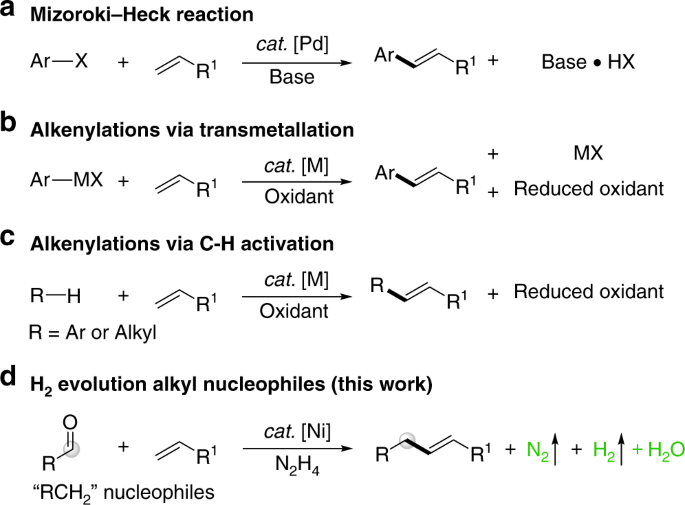- Select a language for the TTS:
- UK English Female
- UK English Male
- US English Female
- US English Male
- Australian Female
- Australian Male
- Language selected: (auto detect) - EN
Play all audios:
ABSTRACT A mitochondrial protein called uncoupling protein (UCP1) plays an important role in generating heat and burning calories by creating a pathway that allows dissipation of the proton
electrochemical gradient across the inner mitochondrial membrane in brown adipose tissue, without coupling to any other energy-consuming process1. This pathway has been implicated in the
regulation of body temperature, body composition and glucose metabolism2. However, UCP1-containing brown adipose tissue is unlikely to be involved in weight regulation in adult large-size
animals and humans living in a thermoneutral environment (one where an animal does not have to increase oxygen consumption or energy expenditure to lose or gain heat to maintain body
temperature), as there is little brown adipose tissue present3. We now report the discovery of a gene that codes for a novel uncoupling protein, designated UCP2, which has 59% amino-acid
identity to UCP1, and describe properties consistent with a role in diabetes and obesity. In comparison with UCP1, UCP2 has a greater effect on mitochondrial membrane potential when
expressed in yeast. Compared to _UCP1_, the gene is widely expressed in adult human tissues, including tissues rich in macrophages, and it is upregulated in white fat in response to fat
feeding. Finally, _UCP2_ maps to regions of human chromosome 11 and mouse chromosome 7 that have been linked to hyperinsulinaemia and obesity. Our findings suggest that UCP2 has a unique
role in energy balance, body weight regulation and thermoregulation and their responses to inflammatory stimuli. Access through your institution Buy or subscribe This is a preview of
subscription content, access via your institution ACCESS OPTIONS Access through your institution Subscribe to this journal Receive 12 print issues and online access $209.00 per year only
$17.42 per issue Learn more Buy this article * Purchase on SpringerLink * Instant access to full article PDF Buy now Prices may be subject to local taxes which are calculated during checkout
ADDITIONAL ACCESS OPTIONS: * Log in * Learn about institutional subscriptions * Read our FAQs * Contact customer support SIMILAR CONTENT BEING VIEWED BY OTHERS THE ARMADILLO-REPEAT
CONTAINING X-LINKED PROTEIN 3, ARMCX3, IS A NEGATIVE REGULATOR OF THE BROWNING OF ADIPOSE TISSUE ASSOCIATED WITH OBESITY Article 15 June 2022 A CRITICAL ASSESSMENT OF THE ROLE OF CREATINE IN
BROWN ADIPOSE TISSUE THERMOGENESIS Article 09 January 2023 SEX-SPECIFIC GENETIC REGULATION OF ADIPOSE MITOCHONDRIA AND METABOLIC SYNDROME BY _NDUFV2_ Article 25 October 2021 REFERENCES *
Nicholls, D.G. & Locke, R.M. Thermogenic mechanisms in brown fat. _Physiol. Rev._ 64, 1–64 (1984). Article CAS Google Scholar * Himms-Hagen, J. Brown adipose tissue thermogenesis:
interdisciplinary studies. _FASEB. J._ 4, 2890–2898 (1990). Article CAS Google Scholar * Garruti, G. & Ricquier, D. Analysis of uncoupling protein and its mRNA in adipose tissue
deposits of adult humans. _Int. J. Obes. Relat. Metab. Disord._ 16, 383–390 (1992). CAS PubMed Google Scholar * Bouillaud, F. _et al_. A sequence related to a DNA recognition element is
essential for the inhibition by nucleotides of proton transport through the mitochondrial uncoupling protein. _EMBO J._ 13, 1990–1997 (1994). Article CAS Google Scholar * Horvat, S. &
Medrano, J.F. Interval mapping of high growth (hg), a major locus that increases weight gain in mice. _Genetics_ 139, 1737–1748 (1995). CAS PubMed PubMed Central Google Scholar *
Dragani, T.A. _et al_. Mapping of body weight loci on mouse chromosome X. _Mamm. Genome_ 6, 778–781 (1995). Article CAS Google Scholar * Collins, A.C. Martin, I. & Kirkpatrick, B.W.
Growth quantitative trait loci (QTL) on mouse chromosome 10 in a Quackenbush-Swiss x C57BL/6J backcross. _Mamm. Genome_ 4, 454–458 (1993). Article CAS Google Scholar * Warden, C.H. _et
al_. Identification of four chromosomal loci determining obesity in a multifactorial mouse model. _J. Clin. Invest_ 95, 1545–1552 (1995). Article CAS Google Scholar * West, D.B.
Goudey-Lefevre, J. York, B. & Truett, G.E. Dietary obesity linked to genetic loci on chromosomes 9 and 15 in a polygenic mouse model. _Clin. Invest._ 94, 1410–1416 (1994). Article CAS
Google Scholar * Taylor, B.A. & Phillips, S.J. Detection of obesity QTLs on mouse chromosomes 1 and 7 by selective DNA pooling. _Genomics_ 34, 389–398 (1996). Article CAS Google
Scholar * DeBry, R.W. & Seldin, M.F. Human/mouse homology relationships. _Genomics_ 33, 337–351 (1996). Article CAS Google Scholar * Seldin, M.F. _et al_. Glycogen synthase: a
putative locus for diet-induced hyperglycemia. _J. Clin. Invest._ 94, 269–276 (1994). Article CAS Google Scholar * Hashimoto, L. _et al_. Genetic mapping of a susceptibility locus for
insulin-dependent diabetes mellitus on chromosome 11 q. _Nature_ 371, 161–164 (1994). Article CAS Google Scholar * Surwit, R.S. Kuhn, C.M. Cochrane, C. McCubbin, J.A. & Feinglos, M.N.
Diet-induced type II diabetes in C57BL/6J mice. _Diabetes_ 37, 1163–1167 (1988). Article CAS Google Scholar * Brownlow, B.S. Petro, A. Feinglos, M.N. & Surwit, R.S. The role of motor
activity in diet-induced obesity in C57BL/6J mice. _Physiol. Behav._ 60, 37–11 (1996). Article CAS Google Scholar * Surwit, R.S. _et al_. Differential effects of fat and sucrose on the
development of obesity and diabetes in C57BL/6J and A/J mice. _Metabolism_ 44, 645–651 (1995). Article CAS Google Scholar * Brand, M.D. Couture, P. Withers, K.W. & Hulbert, A.J.
Evolution of energy metabolism. Proton permeability of the inner membrane of liver mitochondria is greater in a mammal than in a reptile. _Biochem. J._ 275, 81–86 (1991). Article CAS
Google Scholar * Porter, R.K. & Brand, M.D. Causes of differences in respiration rate of hepatocytes from mammals of different body mass. _Am. J. Physiol._ 269, R1213–1224 (1995). CAS
PubMed Google Scholar * Porter, R.K. & Brand, M.D. Body mass dependence of H+ leak in mitochondria and its relevance to metabolic rate. _Nature_ 362, 628–630 (1993). Article CAS
Google Scholar * Diolez, P. Petit, P.X. Chapey, M.-F. & Goubern, M. Homeostatic regulation of mitochondrial membrane potential by the uncoupling protein of brown adipose tissue. in _8th
European Bioenergetics Conference_, 1994) Google Scholar * Prieto, S. Bouillaud, F. Ricquier, D. & Rial, E. Activation by ATP of a proton-conducting pathway in yeast mitochondria.
_Eur. J. Biochem._ 208, 487–491 (1992). Article CAS Google Scholar * Nedergard, J. & Cannon, B. The uncoupling protein thermogenin and mitochondrial thermogenesis. in _Molecular
Mechanisms in Bioenergetics_ Vol. 23 (ed. Ernster, L.) 385–420 (Elsevier Science, London, 1992). Chapter Google Scholar * Vercesi, A.M. _et al_. PUMPing plants. _Nature_ 375, 24 (1995).
Article CAS Google Scholar * Brustovetsky, N. & Klingenberg, M. The reconstituted ADP/ATP carrier can mediate H+ transport by free fatty acids, which is further stimulated by
mersalyl. _J. Biol. Chem._ 269, 27329–27336 (1994). CAS PubMed Google Scholar * Oppert, J.M. _et al_. DNA polymorphism in the uncoupling protein (UCP) and human body fat. _Int. J. Obes._
18, 526–531 (1994). CAS Google Scholar * Clement, K. _et al_. Genetic variation in the beta3-adrenergic receptor and an increased capacity to gain weight in patients with morbid obesity.
_N. Engl. J. Med._ 333, 352–354 (1995). Article CAS Google Scholar * Neel, J.V. Diabetes mellitus: A “thrifty” genotype rendered detrimental by “progress”. _Am. J. Hum. Genet._ 14,
353–362 (1962). CAS PubMed PubMed Central Google Scholar * Watson, M.L. _et al_. A linkage map of mouse chromosome 1 using an interspecific cross segregating for the gld autoimmunity
mutation. _Mamm. Genome_ 2, 158–171 (1992). Article CAS Google Scholar * Rothwell, N.J. & Stock, M.J. A role for brown adipose tissue in diet-induced thermogenesis. _Nature_ 281,
31–35 (1979). Article CAS Google Scholar Download references AUTHOR INFORMATION AUTHORS AND AFFILIATIONS * CNRS/CEREMOD, 9, rue Jules Hetzel, 92190, Meudon, France Christophe Fleury,
Serge Raimbault, Odette Champigny, Corinne Levi-Meyrueis, Frederic Bouillaud & Daniel Ricquier * Rowe Program in Genetics and Depts. of Pediatrics, Biological Chemistry and Medicine, UC
Davis, Davis, California, 95616, USA Maria Neverova, Michael F. Seldin & Craig H. Warden * Department of Psychiatry and Behavioral Sciences, the Sarah Stedman Nutrition Center and
Department of Pharmacology, Duke University Medical Center, Durham, North Carolina, 27710, USA Sheila Collins & Richard S. Surwit Authors * Christophe Fleury View author publications You
can also search for this author inPubMed Google Scholar * Maria Neverova View author publications You can also search for this author inPubMed Google Scholar * Sheila Collins View author
publications You can also search for this author inPubMed Google Scholar * Serge Raimbault View author publications You can also search for this author inPubMed Google Scholar * Odette
Champigny View author publications You can also search for this author inPubMed Google Scholar * Corinne Levi-Meyrueis View author publications You can also search for this author inPubMed
Google Scholar * Frederic Bouillaud View author publications You can also search for this author inPubMed Google Scholar * Michael F. Seldin View author publications You can also search for
this author inPubMed Google Scholar * Richard S. Surwit View author publications You can also search for this author inPubMed Google Scholar * Daniel Ricquier View author publications You
can also search for this author inPubMed Google Scholar * Craig H. Warden View author publications You can also search for this author inPubMed Google Scholar CORRESPONDING AUTHOR
Correspondence to Craig H. Warden. RIGHTS AND PERMISSIONS Reprints and permissions ABOUT THIS ARTICLE CITE THIS ARTICLE Fleury, C., Neverova, M., Collins, S. _et al._ Uncoupling protein-2: a
novel gene linked to obesity and hyperinsulinemia. _Nat Genet_ 15, 269–272 (1997). https://doi.org/10.1038/ng0397-269 Download citation * Received: 22 November 1996 * Accepted: 14 January
1997 * Issue Date: 01 March 1997 * DOI: https://doi.org/10.1038/ng0397-269 SHARE THIS ARTICLE Anyone you share the following link with will be able to read this content: Get shareable link
Sorry, a shareable link is not currently available for this article. Copy to clipboard Provided by the Springer Nature SharedIt content-sharing initiative








